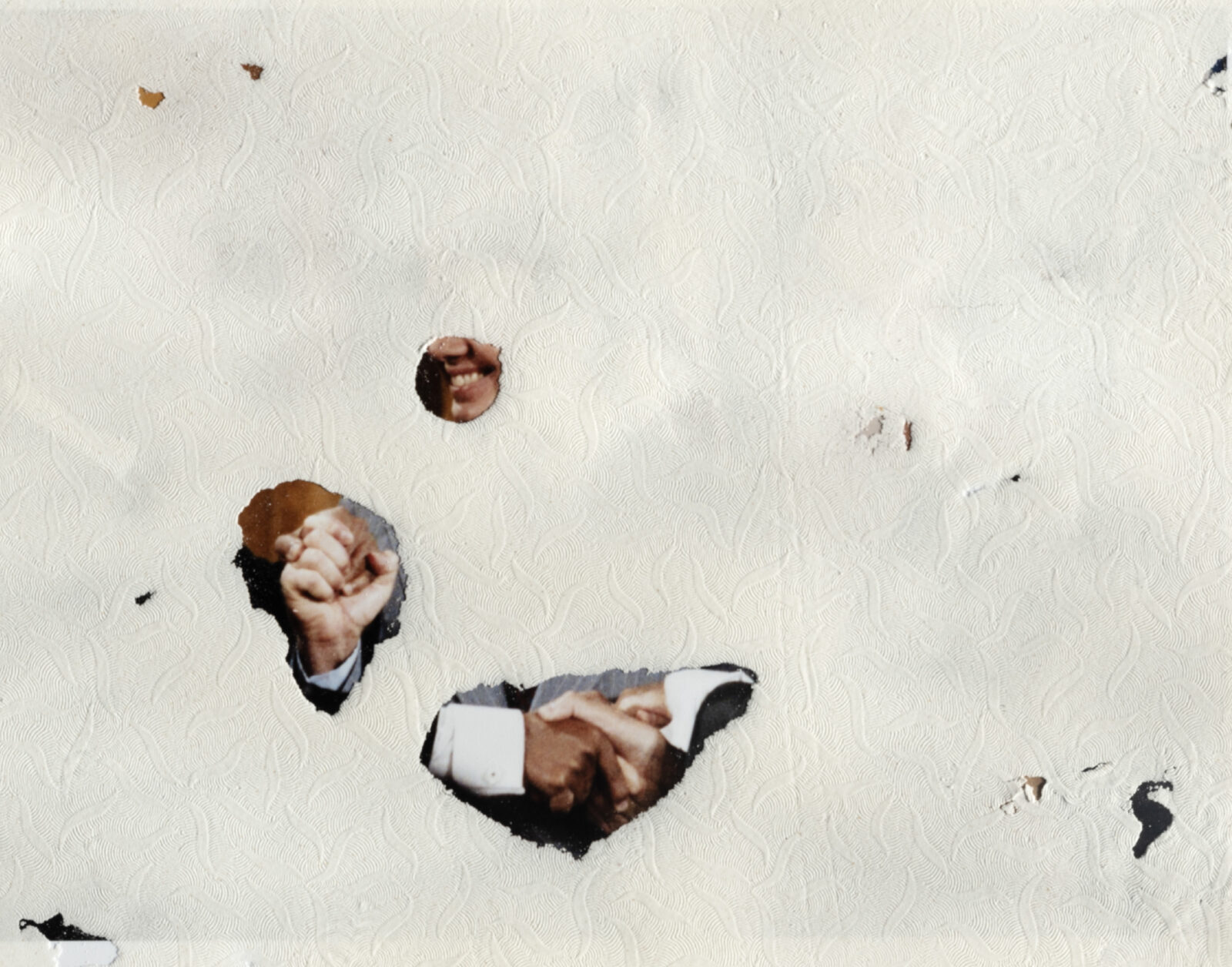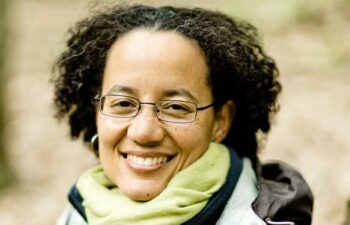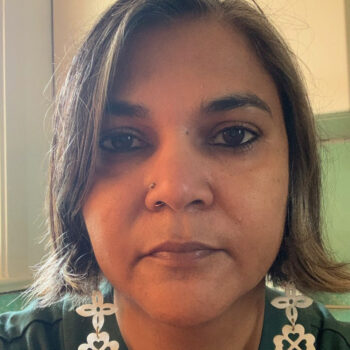
Illustration by Priya Suresh Kambli

Illustration by Priya Suresh Kambli
Social and racial justice activism must be based on an understanding of our fundamental interconnectedness in order to bring about real and lasting transformation. The teachings on interdependence are some of the deepest teachings in Buddhism. They support us in breaking free of the illusion of separation—which lies at the heart of our suffering, individually and collectively.
Dr. Martin Luther King Jr. emphasized turning enemies into friends. During the war in Vietnam, Thich Nhat Hanh similarly insisted that “man is not our enemy.” The real enemy is ignorance, hatred, and greed in our hearts—that is what we must transform. This kind of activism—the kind that strives not to polarize or to “other” those we are in conflict with—takes time, patience, and great spiritual strength and discipline. It is not quick nor surface level. It holds as fundamental the possibility of belonging for all of us.
One way interdependence is expressed as interwoven with social and racial justice is in various formulations of the Buddha’s Five Precepts for lay practitioners to live an ethically grounded life and avoid causing unnecessary suffering to self and others. In the version of these precepts offered by Thich Nhat Hanh and the Plum Village Community, each one begins with, “Aware of the suffering caused by . . . (killing, stealing, sexual misconduct, etc.), I am committed to . . . (protecting life, practicing generosity, respecting my commitments and the commitments of others, etc.).”
An even clearer orientation toward interbeing is present in the phrasing of the Five Trainings offered by Inward Bound Mindfulness to teens and young adults on secular mindfulness retreats: “Knowing how deeply our lives intertwine, I undertake the commitment to . . . (protect life, take only what is offered to me, etc.).”
We must acknowledge the ways we have been conditioned to see ourselves as separate and cut off.
Activism that is based on interdependence sees the power of forgiveness and is concerned with how to “heal the land,” as Senator Raphael Warnock has said. What can we do now to heal division and polarization so that at least our children or their children may reap the fruits of peace? We must acknowledge the ways we have been conditioned to see ourselves as separate and cut off. john a. powell of the Othering & Belonging Institute has said:
We’re dealing with three strong separations, and these separations are, in some ways, of the same cloth, but it’s also useful to talk about them separately. One is the separation from ourselves. Another is the separation from the other, or the person we call the other. And the third is separation from the earth. These separations go back to the Enlightenment. This is actually what Western society has been about. It’s been about building and celebrating separations.
This mistaken view of separation can and must be challenged and healed. As W. H. Auden wrote in his poem “September 1, 1939” on the eve of the Second World War, “We must love one another or die.”
United States President Jimmy Carter knew this when he was working to establish a peace accord between Israel and Egypt in 1978. The meetings between Egyptian President Anwar Sadat and Israeli Prime Minister Menachem Begin at the Camp David Accords kept breaking down, and each side threatened to leave the talks, literally packing their bags several times. Each time President Carter convinced them to stay, bicycling back and forth between their residences when they would no longer meet in person. When it seemed they could not move past the impasse and all was lost, President Carter went to them individually with pictures of his grandchildren, and they shared pictures of their grandchildren. He told them, “We must come to a peace agreement for their sakes.” He took the pictures of Begin’s grandchildren to Sadat, and then showed Sadat’s grandchildren to Begin. They signed the peace agreement.
My dad, a white Texan, joined the Civil Rights Movement in the early 1960s. Part of his awakening happened while he was studying theology in Germany in 1959 when his parents sent him a local newspaper from Houston. There was an article about a white mob that hung a local Black man by his heels from a tree on the street where my dad grew up. This article ripped away my father’s ignorance about what was happening in his hometown. He began to see his interdependence with both those who perpetrated the assault and the Black man, and it motivated him to reflect on his obligation to be part of the decades-long movement to end racial discrimination. In 1964 he joined the staff of the Southern Christian Leadership Conference (SCLC), and he participated in nonviolent demonstrations in St. Augustine, Florida, and Selma, Alabama. He was beaten up by racist police and mobs, arrested, and jailed.
My parents later met while working in the ghetto on the West Side of Chicago, where my mom had grown up in a Black working-class family. Their work together was just beginning when Dr. King was assassinated. They were determined to get married and build a life that rejected racism and anti-Blackness. My dad says that working with Dr. King in the Civil Rights Movement helped him to become more fully human.
I am deeply inspired by the wisdom of the modern-day abolition movement, which envisions ways to stop systemic harm and uproot the dangerous beliefs at the root of hatred while at the same time encouraging everyone’s flourishing through restoration, healing, and transformation rather than punishment and retaliation. As Mariame Kaba writes in We Do This ’Til We Free Us: Abolitionist Organizing and Transforming Justice, “Abolition is a vision of a restructured society where we have everything we need: food, shelter, education, health, art, beauty, clean water, and more things that are foundational to our personal and community safety.”
Such a vision is possible and social and racial justice activism based on the wisdom of interdependence can help us get there.

Kaira Jewel Lingo is a dharma teacher with a lifelong interest in blending spirituality with social justice. Her work continues the Engaged Buddhist movement developed by Thich Nhat Hanh, and she draws inspiration from her parents’ stories and her dad’s work with Martin Luther King Jr. After living as an ordained nun for 15 years in Thich Nhat Hanh’s monastic community, Kaira Jewel now teaches internationally in the Zen lineage and the Vipassana tradition, as well as in secular mindfulness, at the intersection of racial, climate, and social justice with a focus on activists, Black, Indigenous, People of Color, artists, educators, families, and youth. Based in New York, she offers spiritual mentoring to groups and is the author of We Were Made for These Times: Ten Lessons in Moving through Change, Loss and Disruption from Parallax Press.

Priya Suresh Kambli is a professor of art at Truman State University in Kirksville, Missouri. Kambli’s artistic approach is grounded in interventions with her family’s inheritance—a personal archive of photographs and heirlooms. This archive, which she brought with her to the United States at age eighteen, a few years after her parent’s death, places her work in the context of migrant narratives and feminist practice. See Kambli’s work at priyakambli.com and @kambli.priya
Get the latest news and stories from the Rubin, plus occasional information on how to support our work.